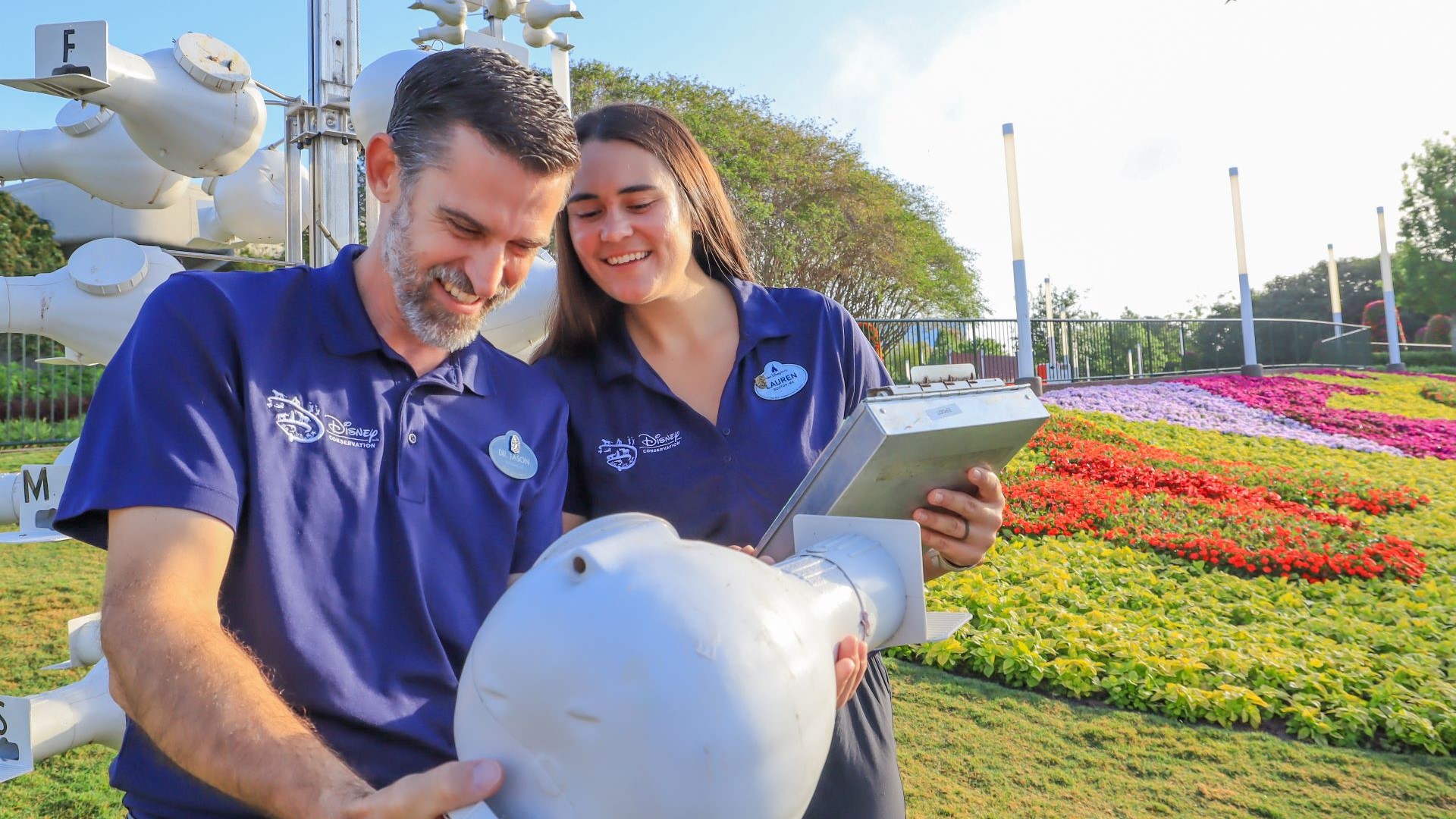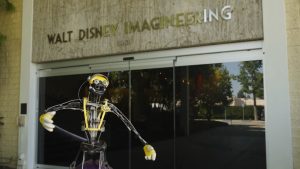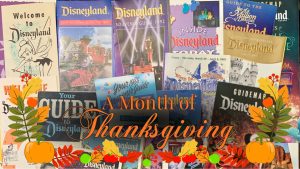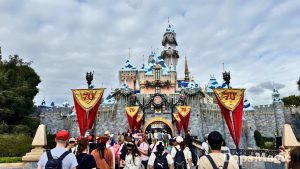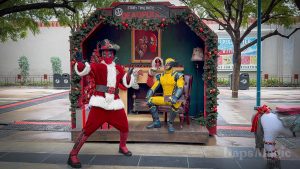Purple martins are a tiny bird species that are native to the Brazilian Amazon. Each year, they make a trek of 3,000 miles, eventually landing at Walt Disney World Resort. They have made this their nesting destination every year since 1998. Starting in January, Disney’s conservation team eagerly awaits the start of purple martin migration season after spending the Fall months ramping up efforts to welcome back the flock.
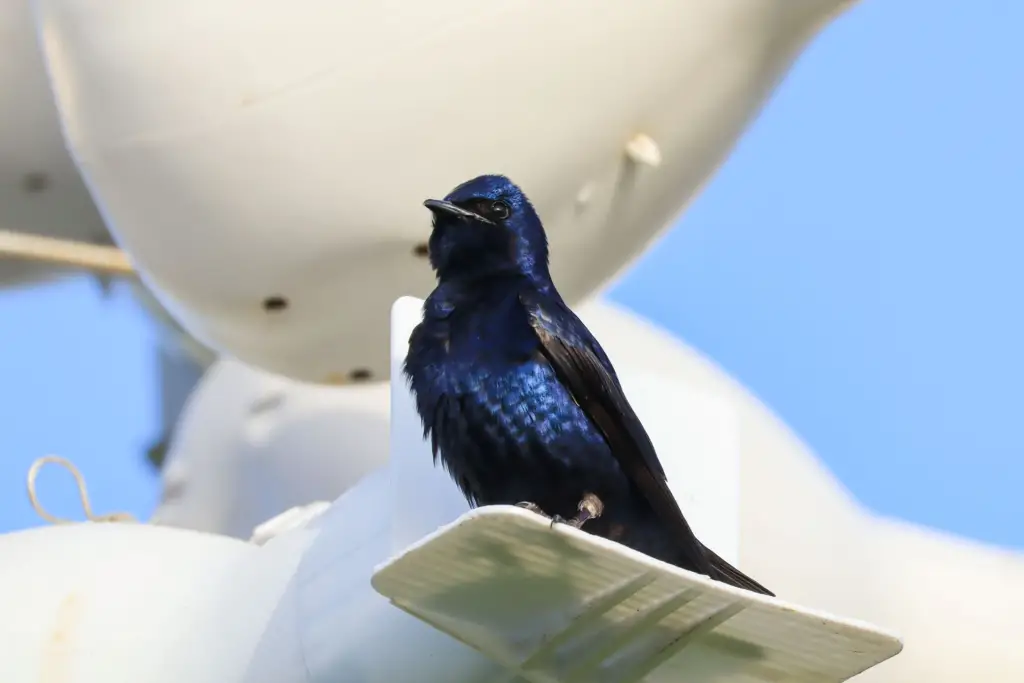
When the birds return, the air is filled with purple iridescence, and loud, musical chirps that create a beautiful melody can be heard. This marks the beginning of the purple martin nesting season.
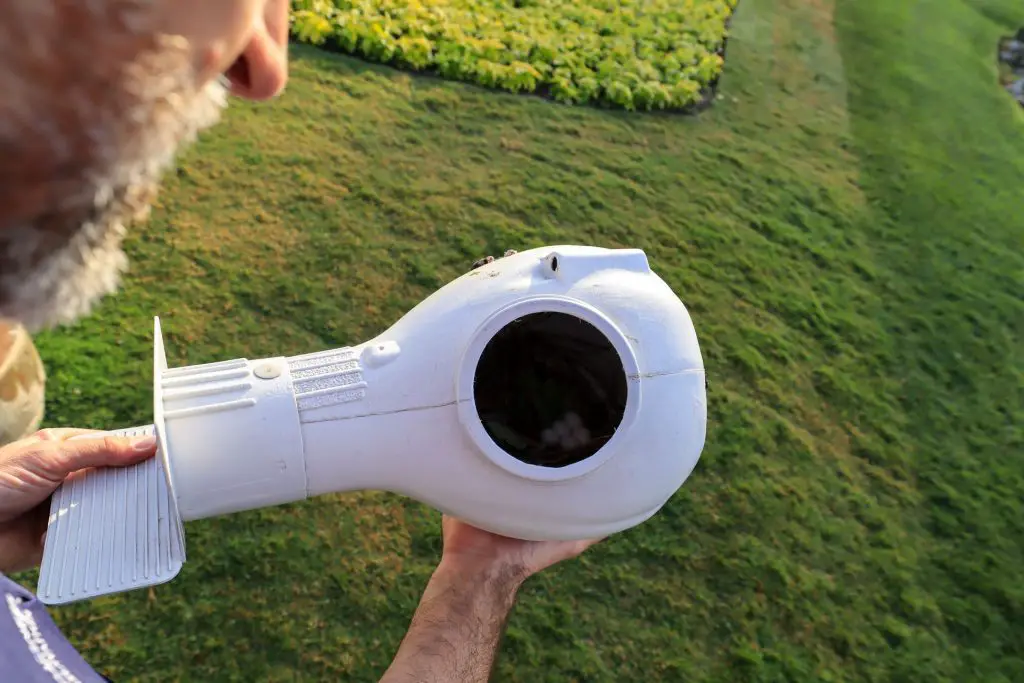

Bird Houses
The bird houses for the purple martins are fairly easy to spot from EPCOT or even some resort hotels across Walt Disney World. They are spotted white structures that look almost like a cartoon tree. These are the colony sites that are a collection of bird houses. They are perfectly designed for purple martins to lay their eggs and then raise their nestlings (they hatch 15 days after the eggs are laid). Throughout the season, male and female purple martins can be seen entering their homes to take care of their young. The moms are responsible for incubating the eggs and brooding. Both parents feed the hatchlings and also clean the bird house so it remains a space fit for a baby bird.
It takes hundreds of hours in preparation to make the perfect nesting compartments for birds to have a safe and comfortable place to lay eggs and raise their hatchlings. Disney goes to great lengths to make them the best bird houses around and encourages the purple martins to return year after year.
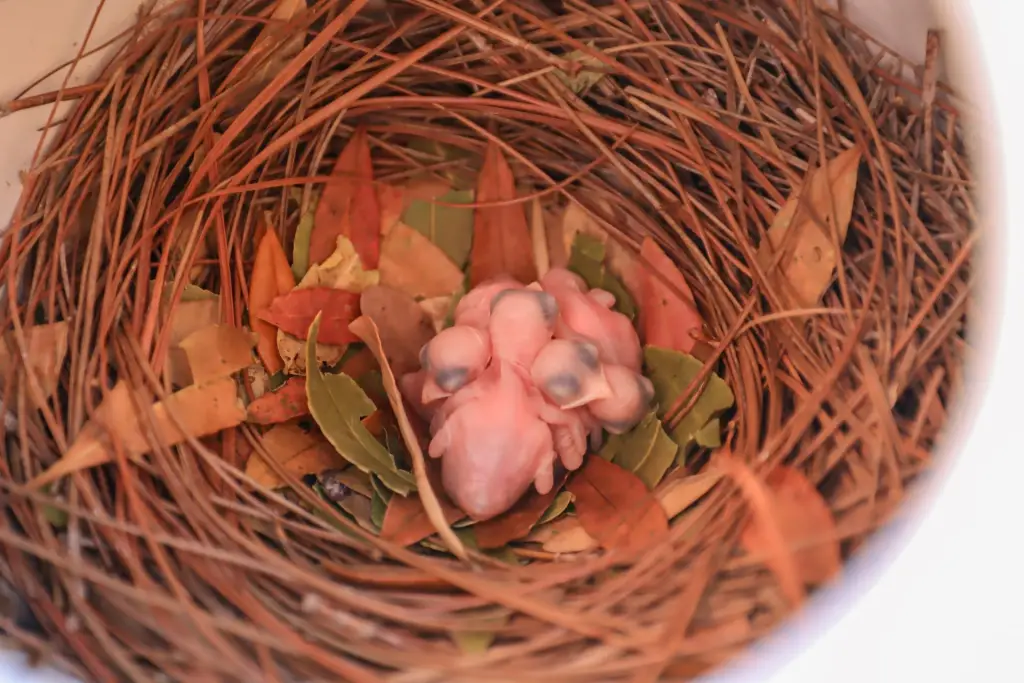
Disney Conservationists
Throughout nesting season, Disney conservationists utilize the opportunity to learn more about this bird species to help aid protection and conservation efforts in the wild. Disney cast members help to study each family of birds. Many of them are given leg bands to be able to track them and gather information and data. This helps monitor their behavior and allows for the observation of where the birds are nesting. After the gathering of data, the Disney conservationists come together for the annual Purple Martin Palooza. Conservationists band the next generation of birds and release them back into the wild so they can successfully return back to the Brazilian Amazon.
Around the world, migratory bird species are increasingly threatened by the loss of stopover habitat where they can find food and clean water. This is one reason that it is so important for Walt Disney World to remain a long-term nesting colony for purple martins.
About the Disney Conservation Fund
The Walt Disney Company is committed to saving wildlife and protecting the magic of nature together as a global community. Since 1995, the Disney Conservation Fund* (DCF) has supported migratory bird conservation efforts by protecting habitats, investing in long-term research and supporting the education of communities that live in and near migratory bird habitats. In addition, support from the DCF is helping nonprofit organizations study and protect purple martins from Brazil to Florida. Since the fund was created 30 years ago, it has supported more than 100 nonprofit organizations working to protect more than 250 species of birds in more than 80 countries, including the purple martin.
This project is a great example of Disney Planet Possible – putting possibility into practice by doing our part to conserve natural resources, care for wildlife and their habitats, use and waste less, and create stories that inspire action. For the latest updates on purple martins and all the animals at Walt Disney World Resort, follow Dr. Mark on Instagram and Disney’s Animals, Science and Environment Facebook page.
What do you think of Disney’s efforts to protect species like the purple martin? Have you seen a purple martin before? What do you think of them? Share your thoughts and opinions in the comments below!

